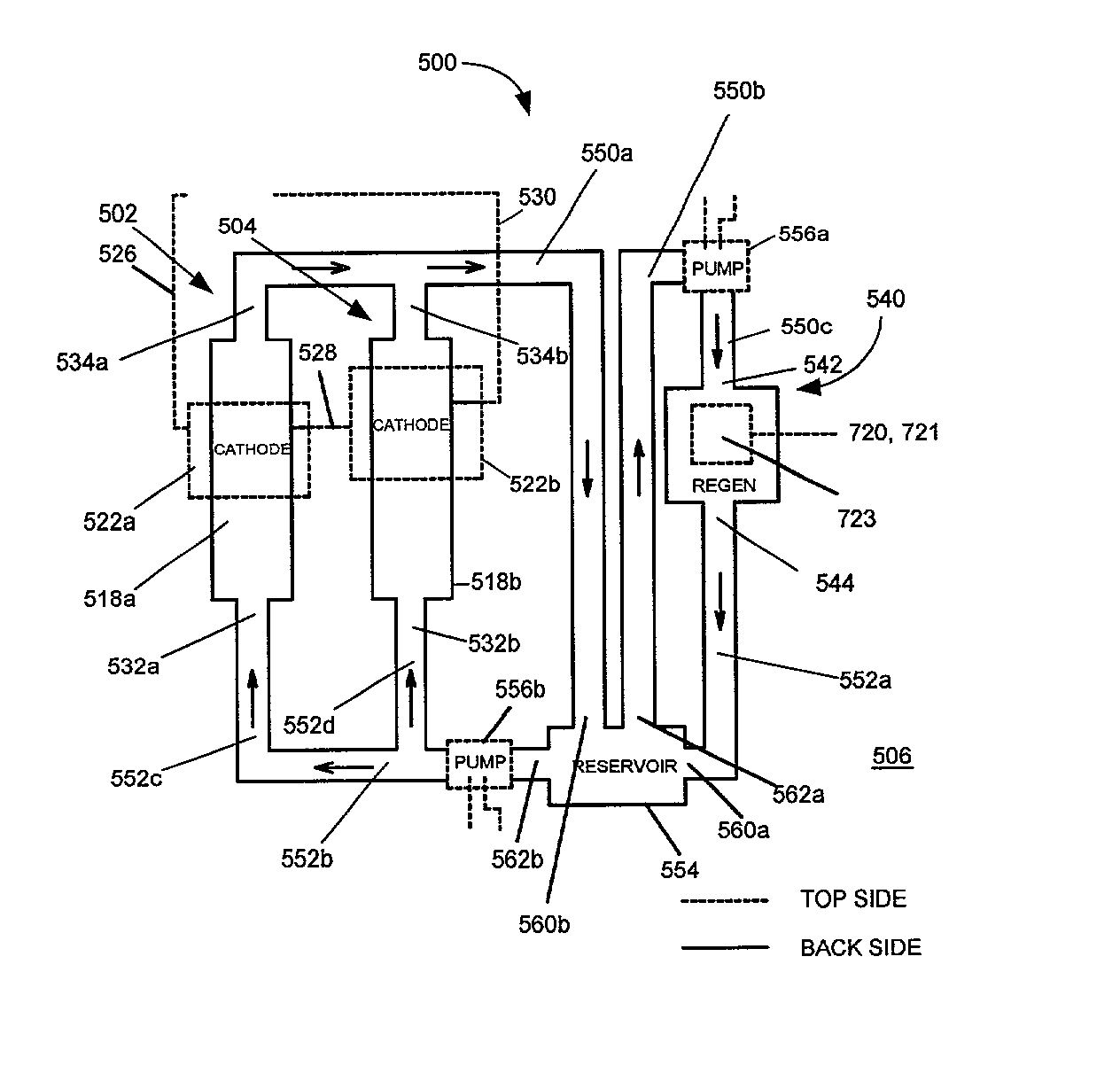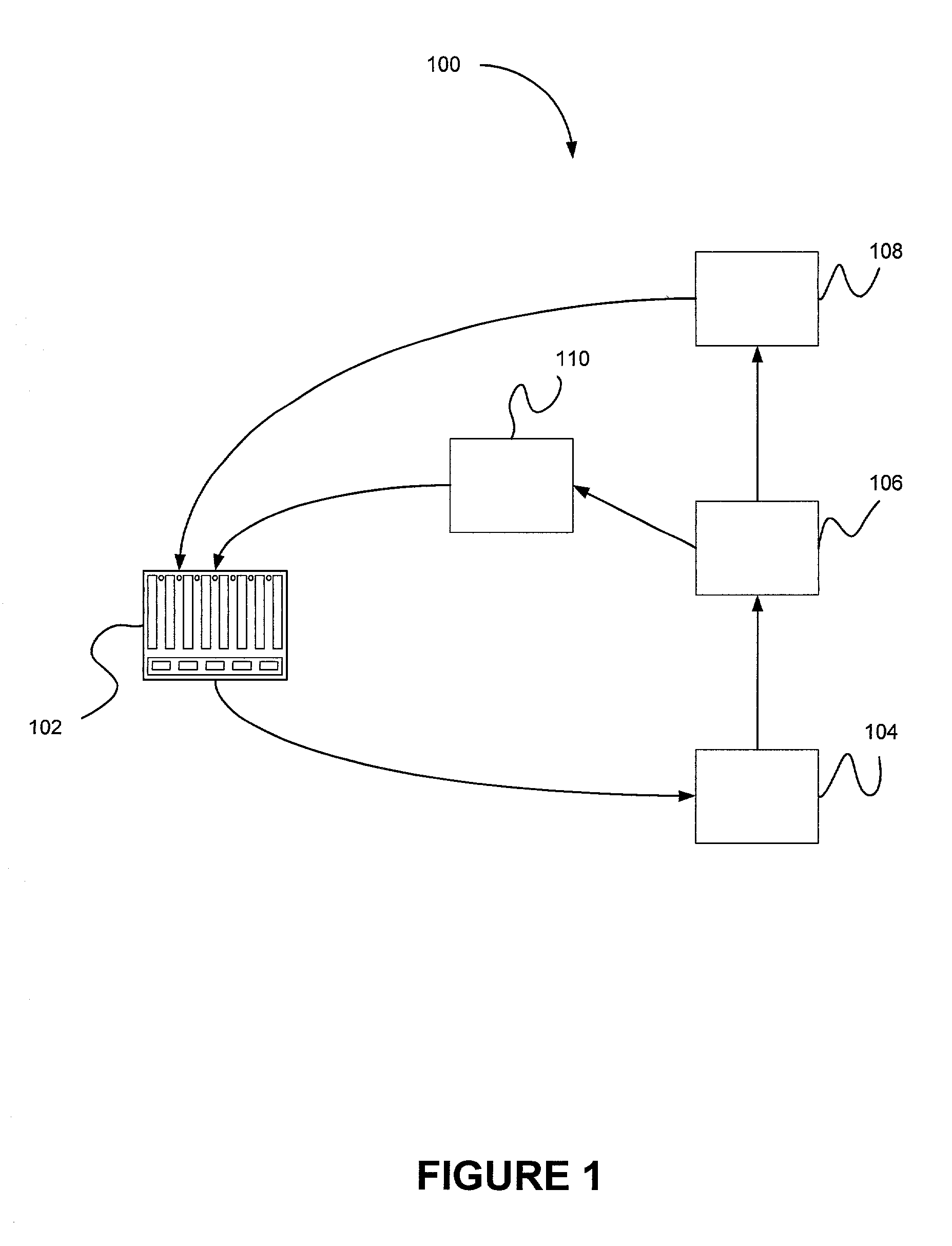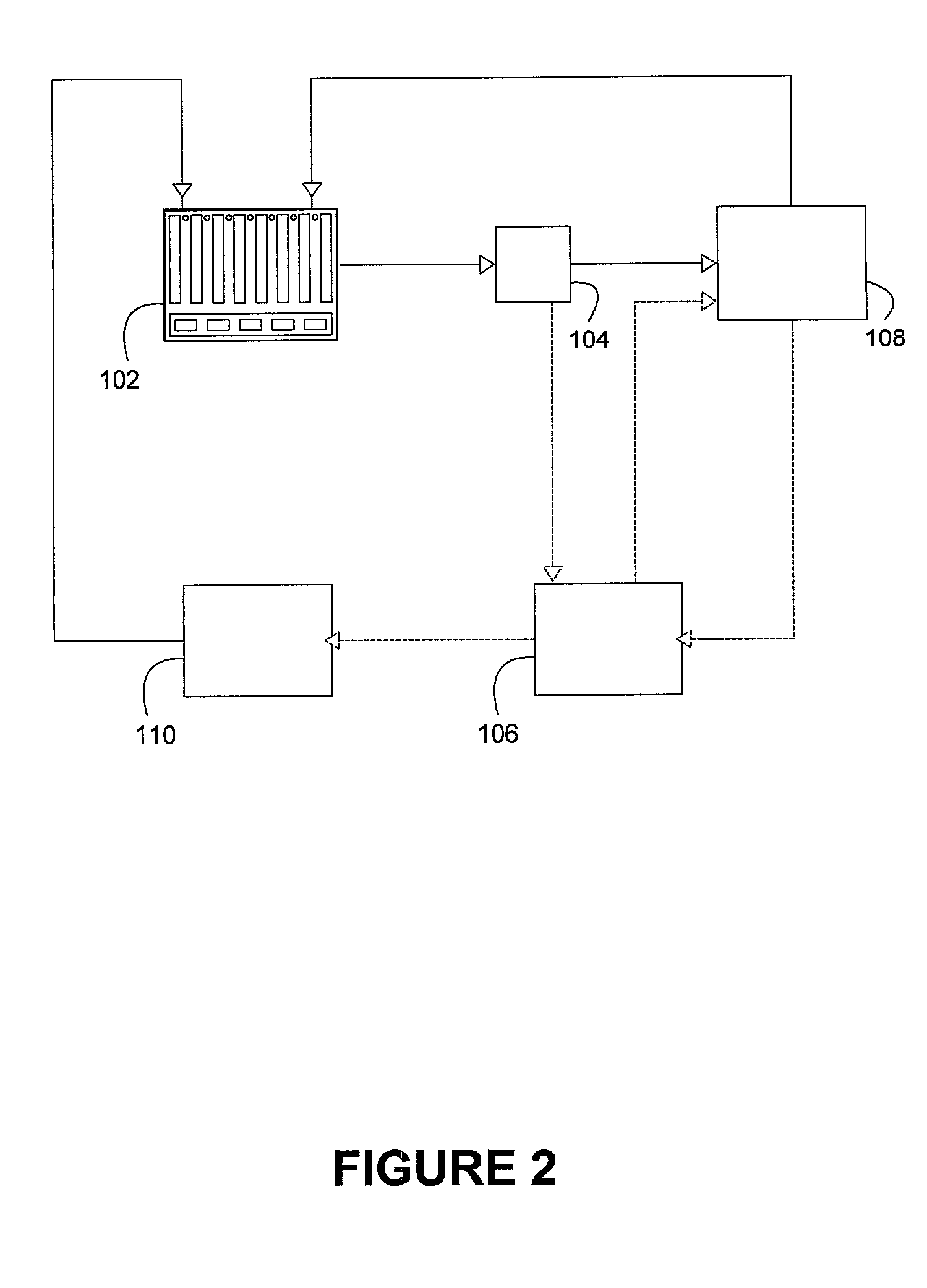Integrated fuel cell and electrochemical power system employing the same
- Summary
- Abstract
- Description
- Claims
- Application Information
AI Technical Summary
Problems solved by technology
Method used
Image
Examples
first embodiment
[0069] Referring to FIG. 3, the invention comprises a fuel cell integrated on or into a unitary planar substrate 340. In one example, the planar substrate 340 is a semiconductor substrate in which cavities or wells are formed through subtractive processes such as etching or patterned etching. Control or load circuitry may also be integrated on the same substrate. The fuel cell comprises an anode cavity 318 integrated on or into the substrate 340 that is capable of holding a fuel. When the fuel cell is in operation, in the case of a metal fuel cell, the fuel in the cavity may form at least a portion of the anode of the fuel cell. Referring to FIG. 4, the cavity 318 has one or more regions of ingress and egress, identified with numerals 332 and 334 respectively, for the fuel and reaction products.
[0070] Referring back to FIG. 3, an optional cathode well 320 extends into a surface of the planar substrate 340 and is in general proximity to the anode cavity 318. A cathode 322 is situated...
second embodiment
[0073] Referring to FIG. 5, the invention comprises an electrochemical power system 500. The system 500 in turn comprises one or more fuel cells 502, 504, a regeneration unit 540 servicing the fuel cells 502, 504, and a reservoir 554 for the storage of fuel regenerated by the regeneration unit 540. The fuel cells 502, 504, the regeneration unit 540, and the reservoir 554 can each be integrated on or into a substrate 506. For purposes of illustration only, two fuel cells 502, 504 are shown coupled in series in the system 500 of FIG. 5, and one regeneration unit 540 is shown servicing the two fuel cells 502, 504. However, it should be appreciated that embodiments of system 500 are possible employing one or more than two fuel cells, coupled in series or parallel, or connected to different loads altogether. Moreover, embodiments are possible which employ more than one regeneration unit or which do not employ a reservoir, at least one which is separated from the regeneration unit. Accord...
third embodiment
[0086] the invention comprises a metal fuel cell integrated on or into a substrate where the fuel cell has a like structure and configuration as the fuel cells 502, 504 described above in relation to the system 500 illustrated in FIG. 5, but with the additional requirement that the portions of the interior of the anode cavity, and the regions of ingress and egress thereto, which come in contact with the reaction medium employed in the metal fuel cell, be substantially chemically inert with respect to the reaction medium. These areas may be inherently substantially chemically inert, or may be rendered substantially chemically inert through various means, such as layering these areas with a layer of a substantially chemically inert substance, or by suitable doping of these areas. Such substances or dopants generally depend on the reaction medium used, but, in the case of a potassium hydroxide solution, a suitable chemically inert substance for coating is PTFE.
PUM
 Login to View More
Login to View More Abstract
Description
Claims
Application Information
 Login to View More
Login to View More - R&D
- Intellectual Property
- Life Sciences
- Materials
- Tech Scout
- Unparalleled Data Quality
- Higher Quality Content
- 60% Fewer Hallucinations
Browse by: Latest US Patents, China's latest patents, Technical Efficacy Thesaurus, Application Domain, Technology Topic, Popular Technical Reports.
© 2025 PatSnap. All rights reserved.Legal|Privacy policy|Modern Slavery Act Transparency Statement|Sitemap|About US| Contact US: help@patsnap.com



